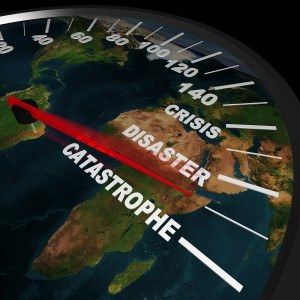

 Insured losses for last year’s 330 natural catastrophes reached $134 billion, or 38 percent of their economic price tag of $353 billion, according to a report published by Impact Forecasting, Aon Benfield’s catastrophe model development team.
Insured losses for last year’s 330 natural catastrophes reached $134 billion, or 38 percent of their economic price tag of $353 billion, according to a report published by Impact Forecasting, Aon Benfield’s catastrophe model development team.
The overall economic cost of natural catastrophes includes weather-related natural disasters, which hit a new record at $344 billion, or 97 percent of the overall total, said the report, titled “Weather, Climate & Catastrophe Insight – 2017 Annual Report.”
On the other hand, insured losses ($134 million) absorbed by the private sector and government-sponsored programs were the second-costliest ever incurred—just behind the record of $137 billion in 2011, the report said, noting that the 2017 total for insured losses is 139 percent higher than the $56 billion reported in 2016.
The reason for this jump is that last year’s natural catastrophes were concentrated in the United States, which had a very active Atlantic hurricane season, severe weather events (convective storms) and wildfires, said the report.
With most of 2017’s losses concentrated in the U.S., the insurance penetration levels would be higher than they were in 2016, when nat cats were spread across the globe, explained an Aon Benfield representative.
The record-breaking weather events across the globe included Hurricanes Harvey, Irma and Maria in the U.S. and Caribbean, plus Typhoon Hato in China and Cyclone Debbie in Australia. For historical context, the report said, 2017’s natural catastrophe losses were 93 percent higher than the 2000-2016 average.
“While 2017 was an expensive year for the insurance industry, the reinsurance market had an estimated $600 billion in available capital to withstand the high volume of payouts,” commented Eric Andersen, CEO of Aon Benfield. “Most critically, the U.S. weather and wildfire events in particular have demonstrated the value of reinsurance, with claims being paid in an average of eight days to augment the recovery process.”
Additional key findings include:
“The high cost of disasters in 2017 served as a reminder that we continue to face increasing levels of risk as more people and exposures are located in areas that are particularly vulnerable to major, naturally occurring events,” said Steve Bowen, Impact Forecasting director and meteorologist.
“As weather scenarios grow more volatile in their size and potential impact, it becomes more imperative than ever to identify ways to increase awareness, improve communication and lower the insurance protection gap. We know natural disasters are going to occur. The question is how prepared are we going to be when the next one strikes.”
Other significant events during the year included:
In its annual report on catastrophes in 2016, Aon Benfield revealed that insured losses from 315 natural catastrophe events amounted to 26 percent, or $54 billion, of overall economic losses of $210 billion.
Top 10 Global Economic Loss Events
| Date(s) | Event | Location | Deaths | Economic Loss (USD) | Insured Loss (USD) |
|---|---|---|---|---|---|
| Aug. 25-Sept. 2 | Hurricane Harvey | U.S. | 90 | ~100 billion | ~30 billion |
| Sept. 18-22 | Hurricane Maria | Caribbean Islands | 651 | ~65 billion | ~27 billion |
| Sept. 4-12 | Hurricane Irma | U.S., Caribbean Islands | 134 | ~55 billion | ~23 billion |
| October | Wildfires | United States | 43 | 13 billion | 11 billion |
| Summer | Flooding | China | 116 | 7.5 billion | 300 million |
| Summer & Autumn | Drought | Southern Europe | N/A | 6.6 billion | 700 million |
| Sept. 19 | Earthquake | Mexico | 370 | 4.5 billion | 1 billion |
| July | Flooding | China | 37 | 4.5 billion | 125 million |
| Aug. 23-25 | Typhoon Hato | China | 22 | 3.5 billion | 250 million |
| May 8-11 | Severe Weather | United States | 0 | 3.4 billion | 2.6 billion |
| All Other Events | 87 billion | 38 billion | |||
| Totals | 334 billion1 | 134 billion1,2 | |||
1 Subject to change as loss estimates are further developed
2 Includes losses sustained by private insurers and government-sponsored programs
Source: Aon Benfield/Impact Forecasting